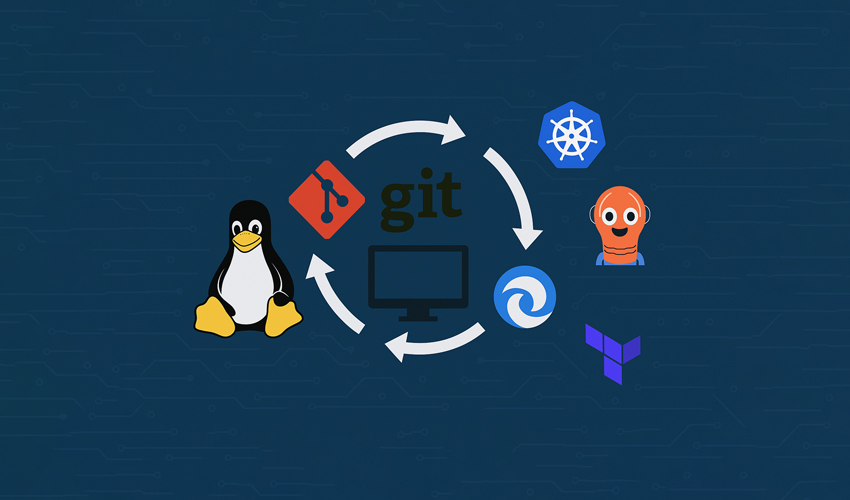Harnessing GitOps on Linux for Seamless, Git-First Infrastructure Management

Introduction
Imagine a world where every server, application, and network configuration is meticulously orchestrated via Git, where updates, audits, and recoveries happen with a single commit. This is the realm GitOps unlocks, especially potent when paired with the versatility of Linux environments. In this article, we'll dive deep into how Git-driven workflows can transform the way you manage Linux infrastructure, offering clarity, control, and confidence in every change.
GitOps Demystified: A New Infrastructure Paradigm
GitOps isn't just a catchy buzzword, it's a methodical rethink of how infrastructure should be managed.
-
It treats Git as the definitive blueprint for your live systems, everything from server settings to application deployments is declared, versioned, and stored in repositories.
-
With Git as the single source of truth, every adjustment is tracked, reversible, and auditable, turning ops into a transparent, code-centric process.
-
Beyond simple CI/CD, GitOps introduces a continuous reconciliation model: specialized agents continuously compare the actual state of systems against the desired state in Git and correct any discrepancies automatically.
Why Linux and GitOps Are a Natural Pair
Linux stands at the heart of infrastructure, servers, containers, edge systems, you name it. When GitOps is layered onto that:
-
You'll leverage Linux’s scripting capabilities (like bash) to craft powerful, domain-specific automation that dovetails perfectly with GitOps agents.
-
The transparency of Git coupled with Linux’s flexible architecture simplifies debugging, auditing, and recovery.
-
The combination gives infrastructure teams the agility to iterate faster while keeping control rigorous and secure.
Architecting GitOps Pipelines for Linux Environments
Structuring Repositories Deliberately
A well-organized Git setup is crucial:
-
Use separate repositories or disciplined directory structures for:
-
Infrastructure modules (e.g., Terraform, networking, VMs),
-
Platform components (monitoring, ingress controllers, certificates),
-
Application-level configurations (Helm overrides, container versions).
-
-
This separation helps ensure access controls align with responsibilities and limits risks from misconfiguration or accidental cross-impact.